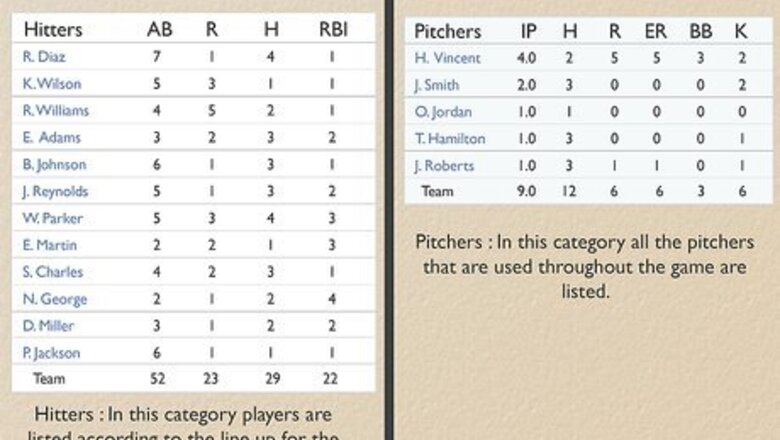
views
Understanding Basic Statistics
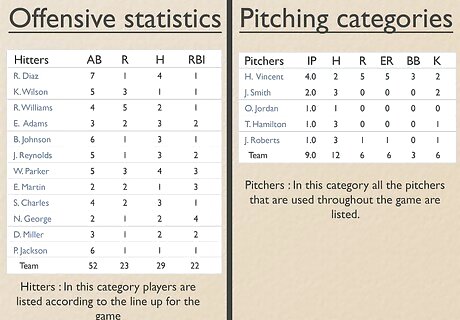
Scan a standard box score. Box scores are statistical representations of how players performed in specific games and you can find them in the Sports section of a newspaper or on a sports website. Standard box scores list, in a table format, 4 offensive statistics and 6 pitching categories.
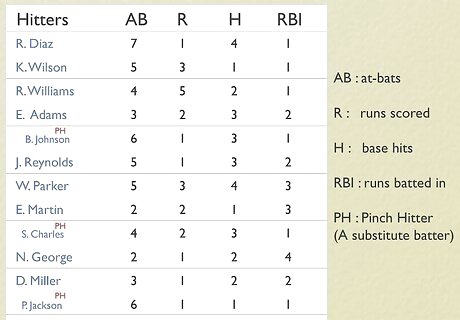
View the team's lineup. The entire lineup is listed in the offensive, or batting, section of the box score. Players are listed in batting order with the positions they played during the game following their names. Substitutes' names are indented in the box score and are listed under the player they replaced. The 4 categories listed in the offensive table are: AB: at-bats R: runs scored H: base hits RBI: runs batted in
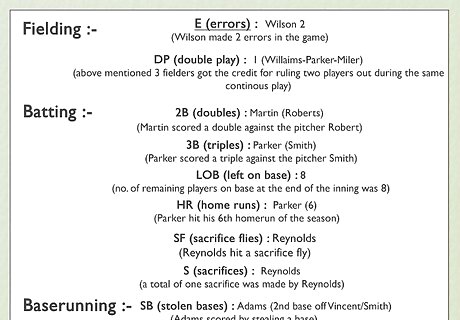
Scan the more-detailed fielding and batting information under the offensive table. Individual accomplishments are singled out in this section. For example, if a player named Smith hit his 6th home run of the season, the box score would read, HR: Smith (6). Other statistical categories in this section of the box score would include: E: errors, LOB: left on base (team statistic), and DP: double plays (team statistic). 2B: doubles, 3B: triples, and HR: home runs (with season total). SB: stolen bases, SF: sacrifice flies, and S: sacrifices.
Reading Pitching Statistics in a Box Score
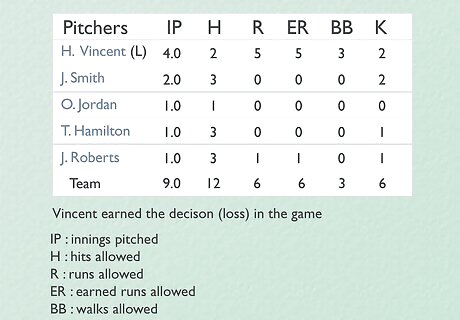
Browse pitching statistics. Pitchers are listed in the order they appeared in the game. If a pitcher earned a decision in the game--win, loss or save-�it is shown after his name as either W, L or S. The symbol is accompanied by his current win-loss record or the number of saves he has earned to date. The 6 categories listed in the pitching table are: IP: Innings pitched: this can involve a decimal figure of either .1 or .2, representing part of an inning. For example, a starting pitcher completed 6 full innings and retired one batter in the 7th. His IP figure would be 6.1. H: hits allowed R: runs allowed ER: earned runs allowed BB: walks allowed K: strikeouts
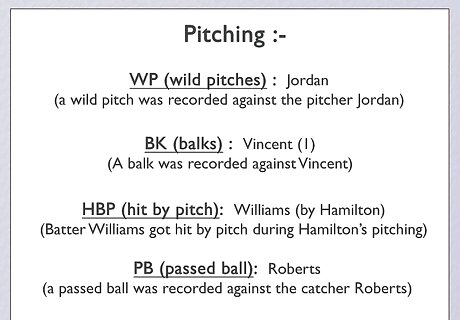
Survey in-depth pitching data. Under the pitching table is a list of additional pitching statistics. They can include: WP: wild pitches, BK: balks, HBP: hit by pitch, and PB: passed balls (catcher's statistic).
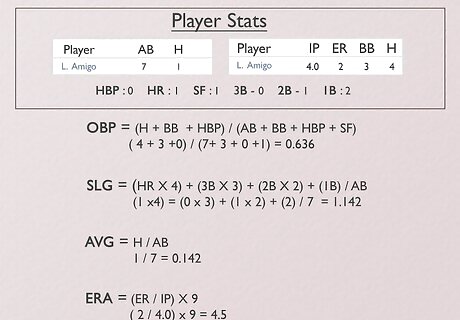
Examine season statistics. Season statistics include all of the categories listed in box scores, and also other important data. Some of the most notable are: OBP: To find a player's on-base percentage, or OBP, add his hits, walks and hit-by-pitch totals and divide that sum by the combined total of his at-bats, walks, hit-by-pitch and sacrifice flies. (H+BB+HBP/AB+BB+HBP+SF) Slg.: To find a player's slugging percentage, divide his total bases by his at-bats. Total bases are the sum of the player's home runs x 4, triples x 3, doubles x 2, and singles. Avg.: Divide the number of hits by the number of at-bats to compute Avg., which is the player's the batting average. ERA: Earned-run average, or ERA represents a pitcher's overall effectiveness per 9 innings. To find an ERA, divide the pitcher's earned runs by his innings pitched, and multiply the quotient by 9.
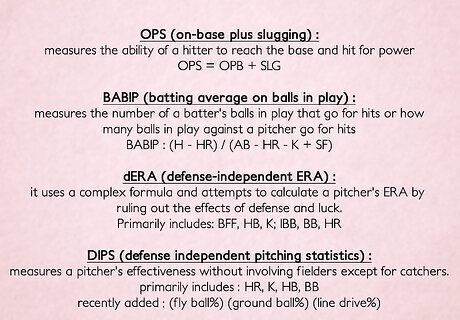
Investigate other statistical applications. In recent decades, various methods of statistical analysis in baseball have surfaced. Few have revolutionized the process of evaluating baseball talent like Sabermetrics. While many of Sabermetrics' tenets have gained widespread acceptance among fans and analysts, the two below stand out. OPS: On Base + Slugging. Sabermetrics creator Bill James sought a simple, defining statistic that would gauge a player's ability to produce runs. After compiling OPS figures on hundreds of players over many years, its effectiveness in determining a player's value to his team was continually supported. The Major League average for OPS is 0.728. A superstar has an OPS of 0.900. Pitching analysis: Using a variety of complex computations, Sabermetrics devised ground-breaking methods to examine pitchers. With nomenclatures as unusual as their formulas, BABIP, dERA and DIPS measure pitching effectiveness while removing the effects of luck and defense, and incorporating the effect of the ballpark.
Viewing WHIP - Walks and Hits per Inning Pitched[19] X Research source
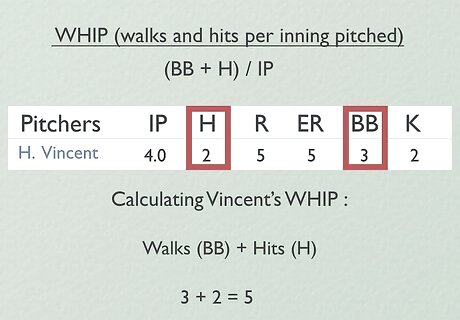
Add walks and hits given up by the pitcher in his outing.
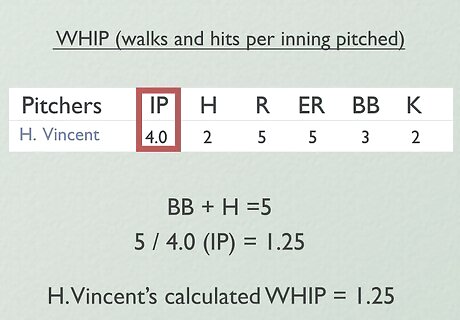
Divide the above total by the total number of innings pitched. For example: Kershaw walks none and gives up one hit over 7 innings, 1/7 = 0.143 WHIP. If that hit was a home run, his ERA would be 1.28. But it if was just a hit, his ERA would be 0.00 which doesn't fully dictate what happened. To better show the difference, say he scatters 3 walks and 4 hits, but no runs. His ERA is still 0.00, but now his whip has jumped to 1.00. You can take that two ways, either he gets out of trouble, or he's gotten lucky to avoid giving up runs.




















Comments
0 comment